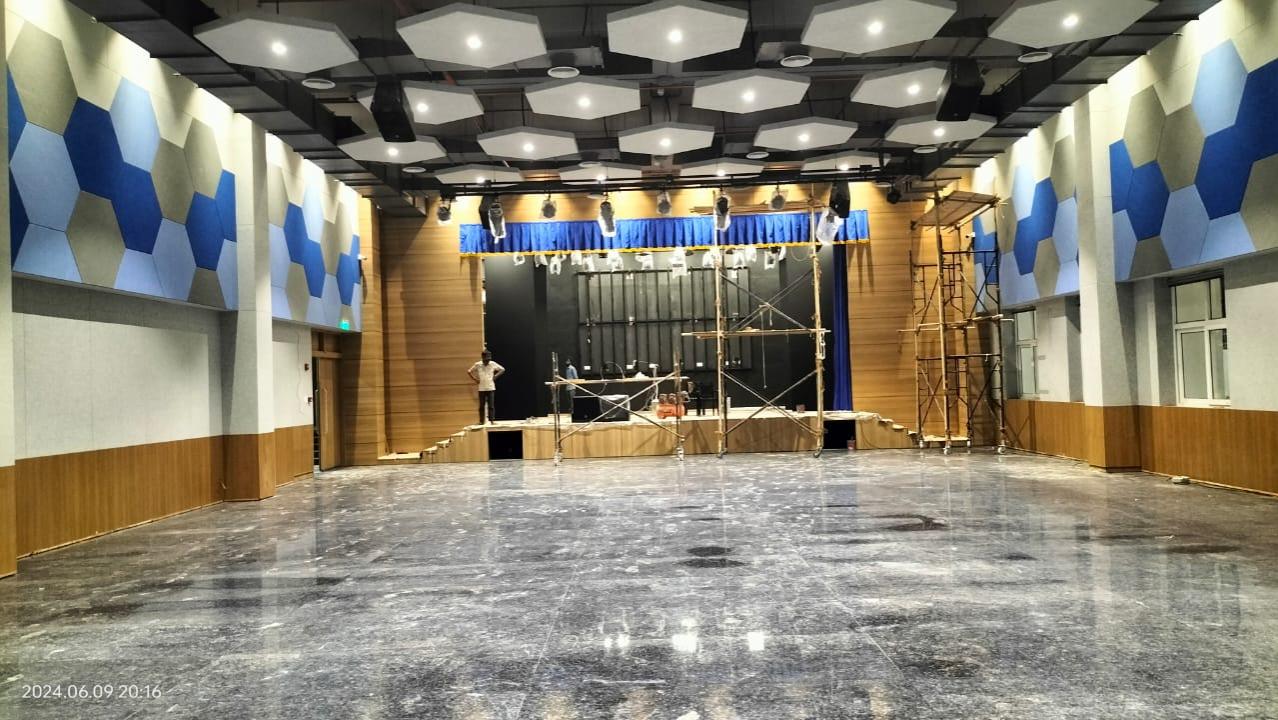What do acoustic materials actually do? Acoustic materials serve a specific purpose as they are designed to keep noise out of a space with sound absorption, acoustic materials work to enhance the sound quality within that space. They reduce echoes and minimize unpleasant reverberations, allowing you to experience the sound you want to hear more clearly and enjoyably.
Think of Acoustic material as the silent heroes in a room, working behind the scenes to absorb, block, or diffuse sound waves, ensuring a pleasant. They come in various forms, design, patterns, types and varieties, for e.g. PET Acoustic Panels, Mass Loaded Vinyl, Fiberglass acoustic panels, Wooden Acoustic Panels, and each type serves a unique purpose.
How Do They Work?
Imagine sound as a bouncing ball. When sound waves hit a hard surface, they reflect and create echoes. Acoustic materials act like soft cushions, absorbing the energy of these sound waves, preventing them from bouncing around. This reduces noise levels, minimizes echoes, and improves sound quality. Some Acoustic materials are also designed to block sound from passing through walls, acting as barriers to keep unwanted noise out.
Why Are They Important?
In spaces like theaters, conference rooms, or open offices, managing sound is crucial for comfort and clarity. Acoustic materials enhance the listening experience by reducing noise pollution, improving speech intelligibility, and creating an overall balanced acoustic environment.
Types of Acoustic Materials
Wooden Acoustic Panels are made from HDF wooden panels which come with NRC 0.40 to 0.90, these acoustic panels combine the natural look of wood with acoustic properties.
Benefits: Wooden Acoustic Panels are durable, eco-friendly, and enhance both sound quality and interior design with customization as per your space requirement.
2. Fiberglass Acoustic Panels:
Fiberglass Acoustic Panels made from fine strands of compressed fiberglass together, fiberglass panels are highly effective in absorbing sound with NRC up to 0.95. They are often used in ceilings and walls.
Benefits: Fiberglass Acoustic Panels are lightweight, fire-resistant, and excellent at absorbing mid to high frequencies and they come in different colors, design and sizes.
PET Acoustic Panels are made from recycled polyethylene terephthalate (PET) acoustic materials, these panels are eco-friendly, versatile and ideal option for sound absorption because they are having NRC up to 0.90.
Benefits: PET Acoustic Panels are lightweight, durable, fire retardant, available in various colors and shapes, effective in reducing noise.
Wood Wool Acoustic Panels composed of wood fibers bonded with adhesive, these panels are best for both acoustic and thermal insulation.
Benefits: Wood Wool Acoustic Panels are eco-friendly, moisture-resistant, and offer a natural aesthetic with NRC of up to 0.85.
Mass Loaded Vinyl is a dense, flexible material used for soundproofing, MLV blocks sound from passing through walls, floors, and ceilings.
Benefits: Mass Loaded Vinyl is a high-density, effective at blocking sound transmission, easy to install.
Choosing the Right Acoustic Material
Selecting the appropriate acoustic material is important considering on several factors:
Purpose of the Space: While choosing acoustic material consider whether the goal is to reduce noise, enhance sound quality, or ensure privacy.
Aesthetic Requirements: Choose acoustic materials that complement the design of the space like Printed PET Acoustic Panels, Slatted wooden wall panels, Perforated or linear Wooden Acoustic panels.
Budget: Acoustic solutions range in cost, so it’s essential to balance performance with budget constraints like Mass Loaded vinyl is the best and affordable solution for the soundproofing.
Environmental Considerations: Eco-friendly options like PET Acoustic Panels and Wooden acoustic panels are ideal for sustainable design.
Conclusion
In conclusion, understanding and utilizing the right acoustic materials is crucial for creating spaces that not only sound better but also enhance overall well-being. Whether you are designing an office, a home, or a public venue, investing in quality acoustic material can significantly improve the environment by reducing noise, enhancing privacy, and contributing to a more comfortable and productive atmosphere.
Note: By selecting the appropriate acoustic materials such as PET Acoustic Panels, Wooden Acoustic panels, Mass Loaded Vinyl, Fiberglass Acoustic panels and incorporating them thoughtfully into your designs, you can achieve a balance between aesthetic appeal and acoustic performance, ensuring that your space is both visually pleasing and acoustically optimized.
For further details, please visitwww.tranquilgloabl.com or email us at info@tranquilglobal.com
















